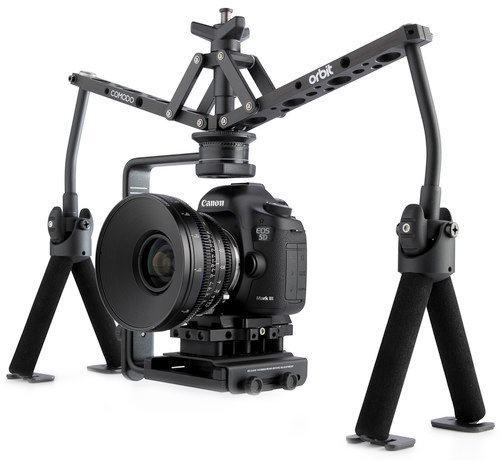The stabilizers or stabilization systems are already part of the usual jargon of any amateur and professional photographer. Professionals already know what it is about, the average fan has proven its benefits or has heard about them, but the new photography fans just came across them and do not know very well what they are going for. Not because it is difficult to understand, much less, but there are so many things to learn, to decide, to compare ... That it is best to gradually break down all the concepts that make up the great EVERYTHING we call photography. So it is best that we quickly and easily see what a stabilizer is, how it works and when we should use them.
WHAT IS AN IMAGE STABILIZER?
We have already commented on the importance of using a minimum speed when we look for sharpness in our images. Surely, with your camera inside the house you will have left more than one image moved, blurred or with an obvious lack of sharpness. Well, that is because there are certain situations in which we lack adequate and minimal ambient light so that our camera is able to freeze the movement. In these situations in which the ambient light is scarce, a stabilizer allows us to reduce the vibrations we cause when holding the camera by hand ; The stabilizer corrects the movement or trepidation that we create when holding the camera and not the movement of the image itself. That is, if a cyclist passes at full speed in front of you in the middle of the night, the stabilizer will NOT freeze the image . That can only be achieved by working at high speeds, which at night is complicatedWHAT TYPES OF STABILIZERS EXIST?
Basically we can divide the stabilizers into two types depending on where they are.IN THE CAMERA LENS (ALSO KNOWN AS OPTICAL STABILIZERS)
This system is used by brands such as Nikon (VR), Canon (IS), Panasonic, Lumix or Leica (Mega OIS) among others. With this system, the stabilization is achieved through sensors (gyroscopes) that detect the movement of the camera and transmit the information to the stabilization lenses, which act as a flexible prism allowing to alter the angle of light that crosses it, in direction contrary to camera movement. That is, through a lens system, the angle generated by the motion is corrected, thus reaching the image stabilized to the sensor.ADVANTAGE
- Being located in the optics, each one carries the specific system that best suits it, and therefore they tend to be more precise and effective.
- The image arrives stabilized to the sensor, so we will see it stabilized before shooting.
DISADVANTAGES
- Its use consumes more battery.
- It comes out more expensive than in the camera body, since you have to pay for the system every time you buy a lens.
IN THE CAMERA BODY (ALSO KNOWN AS MECHANICAL STABILIZERS)
It is the system used by brands such as Pentax (SR), Sony (SteadyShot) or Olympus among others. In this case, the movement is detected through sensors located in the body of the camera that correct the image shaken through the movement of the sensor located in the body of the camera. That is, lenses do not move but it is the same sensor that moves to compensate for the image.ADVANTAGE
- It is more economical, since we only pay for the system once and not for each objective we use.
DISADVANTAGES
- It is not so precise, and something can be resented when we use telephoto lenses, since this system does not take into account the focal length of the lens.
- Increase battery usage.
HOW IS IT USED?
Not all stabilizers have both modes, but they are becoming increasingly common in new models. Normal mode: It is the most recommended when we want to reduce the trepidation caused by the movement generated by our pulse, or what is the same, in most situations. Active mode: It is suitable to eliminate trepidations associated with a linear movement external to the photographer, for example from a car, a motorcycle, a boat, and so on.WHEN SHOULD WE USE THEM?
- When we have low ambient light and we are forced to work with shutter speeds below the minimum necessary so that the images do not come out fast (remember that the reference of these minimum speeds is: shutter speed = 1 / Focal length of the lens ) .
- When we work with telephoto lenses . As the focal length increases, we must work with faster speeds, as trepidations become more evident.
AND WHY NOT ALWAYS?
If you are shooting in broad daylight, with good lighting, at very high speeds, a stabilizer will not contribute anything to your image, it will drain battery, it will slow down the process if you want to shoot in a burst, and so on. A stabilizer has many advantages and great results, but as long as it is necessary. If not, it is best to do without it.- It can reduce the sharpness of the image (everything you add in front of the sensor does it to a greater or lesser extent )
- Spend battery
- It does not contribute anything to the image in bright situations
- Slow down the shot when you need to shoot in burst
- Mounted on a tripod can misinterpret the information and try to correct a non-existent movement that can lead us to erroneous images


